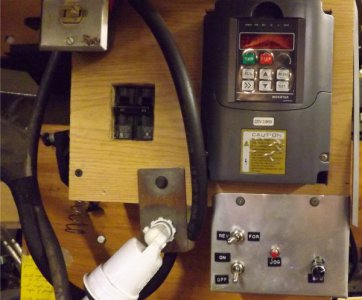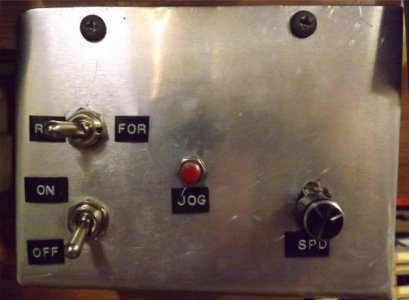- Joined
- Jan 1, 2018
- Messages
- 1,156
Ah, I understand now. I'm not liking the idea of motor control via the VFD. I think my best plan will be move RPC to a quieter space and leave things as they are.
Just for giggles, tell me what happens if I try to use the switches on my machine downstream from the VFD
A standard feature of VFD's is "soft start". The VFD spins the motor up over a period of time instead of near instantly. This GREATLY reduces the amount of current needed to start the motor. The inrush current from hard starting a motor near instantly is many times that of the motors typical run current.
By engaging a motor with a switch between the VFD and the motor you are doing a hard start instead of a soft start. Modern (inexpensive) VFD's are not designed to handle the full inrush current of hard starting the motor. Most likely the VFD will just throw an error and turn off. If the VFD's over current detection doesn't kick in you will likely fry the power transistors in the VFD. Repeatedly tripping the VFD's over current circuit is probably not very healthy for the VFD and will most likely take its toll on the VFD over time.
If you wire your shop for 3 phase and plan for your RPC you can always add VFD's to your machines later if you want to make use of the variable speed control or electronic braking capabilities of a VFD.
Last edited:



